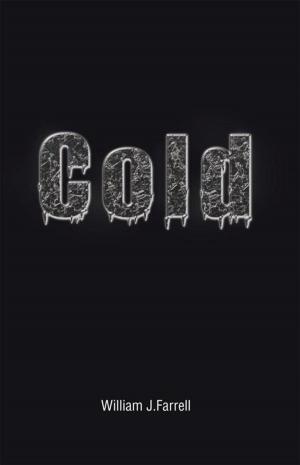| Author: | Mireya Robles | ISBN: | 9781466942042 |
| Publisher: | Trafford Publishing | Publication: | January 29, 2010 |
| Imprint: | Trafford Publishing | Language: | English |
| Author: | Mireya Robles |
| ISBN: | 9781466942042 |
| Publisher: | Trafford Publishing |
| Publication: | January 29, 2010 |
| Imprint: | Trafford Publishing |
| Language: | English |
In 1981 I was an Evaluator at Fort Chaffee, Arkansas, a center for the relocation of the 7,500 refugees that remained there, who had left Cuba from the Port of Mariel and for that reason were later known as Marielitos. My job there was to interview the refugees and make recommendations regarding their relocation. This was not an easy task because many of these 7,500 refugees had come from prisons or mental institutions. I heard their stories, their struggle to survive in or out of jail.
This is the story of Victor who was taken from Combinado del Este prison in Havana and forced by the Cuban government to leave the country. The book depicts the everyday life in the Cuban prison and the socio-political situation in Cuba in 1980, year of the exodus through the port of Mariel.
In 1980 the Cuban government withdraws the guards surrounding the Peruvian Embassy in Havana. In a few hours, ten thousand people were crowding the Embassy to request political asylum. Soon, hundreds of inmates were being transferred from jails in the Islands Interior to prisons in Havana. The government then announces that everyone who so wanted, could leave the country. When what was later known as the Freedom Flotilla arrived in Cuba, the government compelled the exiled Cubans from Florida who had gone to the Island to fetch their relatives and friends, to also load their vessels with people selected by the government: dissidents, prisoners, the mentally ill, homosexuals. Many of the prisoners had been given false documents by the Cuban government to hide the fact that they had come out of jails.
In less than two months, the waters of the 90 miles of sea conveyed, from Cuba to Key West, some 125,000 Marielitos.
Mireya Robles
COMBINADO DEL ESTE by Mireya Robles
Review
The title of this work, which refers to the name of the most infamous prison in Cuba, known for its extreme infringements of human rights, only partially describes the contents of the novel. This is the story of almost seven months in the life of a Cuban young man, from the time preceding his arrest and his incarceration in the prison at the end of 1979 to his release and embarkation for the United States during the Mariel operation of May 1980, in which Fidel Castro forcefully expelled undesirable elements from Cuban society. Thus the novel Combinado del Este is not only a valuable historical documentary, but also a poignant story about the precarious nature of the human condition. Written in an easy conversational style which is skillfully reproduced by the translator, Mireya Robless novel, with its vivid characterisation and its sensitive insights into human relationships, is compelling reading and has a universal quality.
Anna Diegel
Translator and Literary Critic
In 1981 I was an Evaluator at Fort Chaffee, Arkansas, a center for the relocation of the 7,500 refugees that remained there, who had left Cuba from the Port of Mariel and for that reason were later known as Marielitos. My job there was to interview the refugees and make recommendations regarding their relocation. This was not an easy task because many of these 7,500 refugees had come from prisons or mental institutions. I heard their stories, their struggle to survive in or out of jail.
This is the story of Victor who was taken from Combinado del Este prison in Havana and forced by the Cuban government to leave the country. The book depicts the everyday life in the Cuban prison and the socio-political situation in Cuba in 1980, year of the exodus through the port of Mariel.
In 1980 the Cuban government withdraws the guards surrounding the Peruvian Embassy in Havana. In a few hours, ten thousand people were crowding the Embassy to request political asylum. Soon, hundreds of inmates were being transferred from jails in the Islands Interior to prisons in Havana. The government then announces that everyone who so wanted, could leave the country. When what was later known as the Freedom Flotilla arrived in Cuba, the government compelled the exiled Cubans from Florida who had gone to the Island to fetch their relatives and friends, to also load their vessels with people selected by the government: dissidents, prisoners, the mentally ill, homosexuals. Many of the prisoners had been given false documents by the Cuban government to hide the fact that they had come out of jails.
In less than two months, the waters of the 90 miles of sea conveyed, from Cuba to Key West, some 125,000 Marielitos.
Mireya Robles
COMBINADO DEL ESTE by Mireya Robles
Review
The title of this work, which refers to the name of the most infamous prison in Cuba, known for its extreme infringements of human rights, only partially describes the contents of the novel. This is the story of almost seven months in the life of a Cuban young man, from the time preceding his arrest and his incarceration in the prison at the end of 1979 to his release and embarkation for the United States during the Mariel operation of May 1980, in which Fidel Castro forcefully expelled undesirable elements from Cuban society. Thus the novel Combinado del Este is not only a valuable historical documentary, but also a poignant story about the precarious nature of the human condition. Written in an easy conversational style which is skillfully reproduced by the translator, Mireya Robless novel, with its vivid characterisation and its sensitive insights into human relationships, is compelling reading and has a universal quality.
Anna Diegel
Translator and Literary Critic















